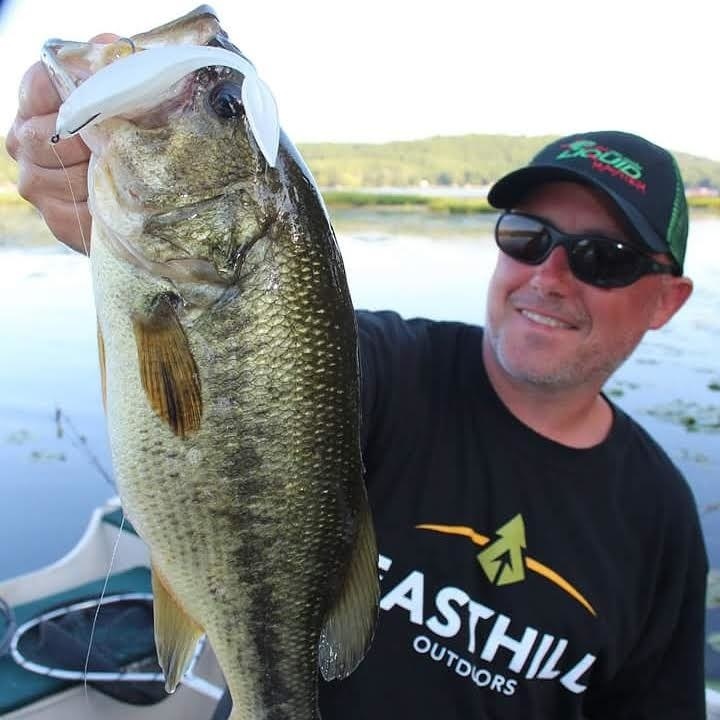Cover All Depths: Breaking down water columns to locate Bass
- Posted on
- By Jamie Wilson
- 0

I’ve said it before and I’ll say it again, patience is not the key to success during any outing on the water. Sitting and waiting for Bass to “turn on” will be a waste of your time and abilities. So, what do you do when you show up at the lake? Does it have to be so random? Should you be aimlessly searching, hoping to find active fish? Or should you essentially find the key depth that Bass are relating to and simply appeal to their instincts? The latter is the obvious answer, so let’s break it down.
I believe your success is predicated on good preparation and clear, well thought out game planning that begins the night before you hit the water. Let’s say your plan at first light is to hit a shallow rocky point adjacent a steep break line that drops into a main lake channel or basin, and for arguments sake, your theory of the Bass being up on this shallower structure is correct. Then what? What happens when the Bass pull off this structure and begin the next phase of their day? Are you prepared to follow these predictable daily movements?
Start by getting your arsenal in order. Hitting a good morning spot brings to mind one obvious presentation – topwaters such as poppers are high on my priority list. If poppers aren’t cutting the mustard, walk the dog style baits can be very effective. Storm Chug Bugs and the Lake Fork Magic Popper(1oz) can be strait retrieved in a pop and stop cadence or can serve as a very erratic walk the dog meets popper presentation.
A 6-6’6” medium fast baitcasting rod, coupled with a 6.3-1 reel spooled with 17lb mono is a great choice for this job. I find the 17lb mono allows more action and makes it easier to walk the bait than 20lb mono. Also, the mono floats and tends to keep the bait from being pulled underwater as with thinner diameter braided line.
Next, as Bass begin to pull off a bit deeper as the sun comes up, having sub-surface baits like wakebaits and shallow running crankbaits tied on will pay dividends. This will allow you to cover water yet still target Bass that are transitioning off their morning spots. Looking for pods of bait dimpling the surface can still be a clue, but as the sun gets higher and the surface of the water breaks up with the wind, this clue disappears. This is where the shallow crankbaits can help you deduce where the Bass are set up. Now, Late morning brings high sun and light penetration pushing fish that much deeper, so pull out the medium diving crankbaits or 1/2oz willow leaf spinnerbaits. Line choice is important here. Fluorocarbon is the deal for both, so I like 10lb flouro for cranks and 17lb, or as light as 15lb test for spinnerbaits. Keep in mind that fluorocarbon sinks, and the thinner diameter the line, the deeper the bait will run. When weeds are present, braided line can be beneficial in snapping free a crankbait from snags but make sure to have a true medium speed, soft crankbait rod as braid can cause lighter trebles to be ripped out of a light biting Bass’ mouth. I prefer medium action Crankin’ Sticks by Bass Pro Shops in a 7’2” length for open water/long casts and the 6’6” for more precise casting around cover/structure. For spinnerbaits I prefer Bass Pro Shops 6’6”-7’ heavy action/high speed (7.1-1) Rick Clun signature series baitcasting combos.
During the mid-day/afternoon period, in open water, Bass are cruising below suspended pods of baitfish so pull out the deep diving cranks. If you are seeing clouds of baitfish with small arcs mixed in, you are not seeing Bass. Look deeper, along bottom as Bass will be following these schools around in a non-threatening way until they can corral them into a point of ambush such as weedlines, large rocks, steep banks etc. Match the depth of the area with a corresponding crankbait. Many companies manufacture crankbaits that can dive down to as deep as 22ft, long casts being obviously important here. Lipless cranks can be dropped down to a given depth which is where I favor the weight forward Kamooki Smartfish. If you contact Bass but you are getting short strikes, that’s a great time to throw a vertical presentation like a jig or tube in the same location around the fringe of the school. Also, one of my go-to baits for this game is again, the Kamooki Smartfish which has a unique spiraling action when ripped/jigged vertically mimicking an injured or fleeing baitfish.
The next order of business can be targeting Bass relating to, and keying on a narrow strike zone a couple feet off bottom. My favorite presentation for this situation is drifting or strolling a drop shot. That fact that this rig can be suspended and held in this strike zone for longer periods than other presentations is what sets it apart. If you are seeing large arcs holding 2ft off bottom, you can literally put a drop shot right on their noses and keep it there for as long as needed. If Bass are keying on baitfish feeding on bottom or crustaceans, dragging tubes or a swimbait rigged on a 3/4oz football jig is a great option. Another great option for bottom bouncing is the Kamooki Smartcraw which is a lipless crankbait with a neutrally buoyant tail up position at rest which mimics a crawfish in a defensive position, Bass candy indeed. For these choices I like 7’ medium heavy spinning rods/2500 series reels spooled with 20lb braid/18-24” fluorocarbon leader. For tubes, a swivel for the mainline/leader connection is a must as tubes will spiral on the drop, causing line twist. As late afternoon transitions to dusk, just simply follow the fish back to the spots they were found at dawn, ending off with the first technique we discussed today.
There you go. We just covered all the water columns in your favorite lake. Obviously, every lake is different so make the appropriate adjustments to match depth, cover etc. One thing to note, don’t get lazy and caught up in steady strait retrieves. Fish erratically. Fish fast. Fish hard. Don’t wait for something to happen, get out there and make it so! See you out there.

Comments
Be the first to comment...